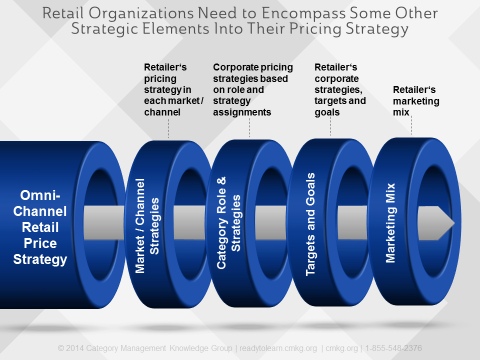Just how to Examine and Optimize Your Pricing Strategy for Better Results
Just how to Examine and Optimize Your Pricing Strategy for Better Results
Blog Article
Understanding Rates Techniques: An Overview to Boosting Competition
In an increasingly affordable landscape, grasping rates strategies is vital for organizations intending to improve their market placement. Understanding competitor pricing and the mental facets that influence customer habits can create a nuanced approach to prices that reverberates with target audiences.
Significance of Pricing Strategies
In the affordable landscape of business, the importance of pricing approaches can not be overstated. Pricing serves as an essential lever for services, affecting both market positioning and customer understanding. A well-defined prices method can enhance productivity, drive sales, and develop a competitive edge.

Comprehending client behavior is essential in crafting prices approaches. Insights into rate level of sensitivity, perceived value, and affordable offerings allow organizations to adjust their prices models appropriately. Additionally, routine evaluation of rates efficiency is essential to react to market characteristics and consumer patterns.
Ultimately, a durable rates technique is indispensable not only for revenue generation however additionally for long-lasting business viability. It shapes brand name identity, influences client commitment, and plays a pivotal role in the total advertising approach. Because of this, services need to spend time and resources in establishing and fine-tuning their rates approaches to thrive in an ever-evolving marketplace.
Sorts Of Prices Models
Exactly how operate determine one of the most effective method to value their solutions or products? The answer depends on understanding different rates versions, each matched to various market conditions and company goals.
One common version is cost-plus prices, where a fixed portion is added to the total price of manufacturing. This approach makes certain that all costs are covered while creating an earnings. Alternatively, value-based rates concentrates on the perceived value of the product to the customer, allowing organizations to charge a premium based upon customer need and contentment.
An additional strategy is dynamic rates, generally made use of in markets such as travel and friendliness. This model adjusts rates in real-time based on market need, competitor pricing, and various other external variables. Infiltration pricing is also considerable, where organizations originally set lower rates to go into an open market and gain market share, later on enhancing prices once a customer base is established.
Last but not least, skimming prices entails setting high first costs for ingenious or new items, taking advantage of very early adopters before lowering rates with time. Recognizing these designs enables organizations to purposefully place themselves in the market, straightening their pricing methods with their overarching objectives.

Studying Competitor Pricing
Comprehending rival rates is an essential facet of formulating an efficient prices technique. Organizations should conduct thorough analyses of their competitors' pricing structures to recognize market positioning, assess possible dangers, and discover opportunities for differentiation. This entails collecting information on rivals' rates, marketing techniques, and any motivations or discount rates they provide.
Analyze their rates versions, including any kind of tiered pricing systems, registration fees, or bulk price cuts - Pricing Strategy. Comprehending the reasoning behind these rates strategies can supply understandings into customer actions and choices.
Think about the implications of competitor prices on your value recommendation. If competitors use similar items at lower costs, you might require to emphasize special selling factors or boost customer service to justify your pricing.
Eventually, analyzing competitor prices not only informs pricing decisions yet additionally assists organizations remain competitive in a frequently advancing market landscape.
Emotional Prices Strategies
Psychological pricing strategies utilize consumer psychology to influence purchasing choices and improve the viewed value of items. These strategies are based in the understanding of just how customers process pricing info and the emotional responses that accompany it. One usual technique is beauty pricing, where rates are set just listed below a rounded number, such as $9.99 rather than $10.00. This strategy makes use of the tendency of consumers to perceive prices as less than they in fact are, encouraging impulse acquisitions.
One more reliable method is eminence rates, where higher costs are connected with higher high quality. This approach appeals to consumers' wish for status and exclusivity, positioning products as superior offerings. In addition, bundling products with each other at a discounted rate can produce a feeling of value, motivating clients to acquire even more than they initially intended.
Scarcity rates, which emphasizes limited accessibility or time-sensitive deals, can additionally set off urgency, pushing consumers to act swiftly. By recognizing and using these psychological prices methods, organizations can effectively shape consumer assumptions, drive sales, and inevitably boost more information competitiveness out there.
Implementing and Readjusting Strategies

When information is collected, businesses need to evaluate click to read more their pricing designs versus existing market problems. This might include taking on dynamic rates strategies that permit real-time modifications based upon supply and demand fluctuations. Services should likewise think about segmenting their market to customize rates for various consumer teams, boosting perceived worth and driving sales.
Regularly assessing rates strategies is vital. This can be accomplished through A/B screening or client comments, which offers insights right into the effectiveness of current pricing. Furthermore, companies must remain adaptable to adjust to unexpected adjustments, such as financial slumps or arising competitors.
Final Thought
To conclude, reliable prices approaches function as an essential part for businesses intending to boost competitiveness in a varying market. By leveraging various rates models, evaluating rival pricing, and using emotional strategies, business can better place themselves and connect worth to customers. Additionally, frequently adjusting these techniques in reaction to market dynamics and customer habits is important for ensuring lasting sustainability and success, ultimately driving sales and fostering client loyalty.
In a progressively affordable landscape, mastering prices strategies is necessary for businesses aiming to boost their market position. Comprehending rival pricing and the mental aspects that impact customer behavior can produce a nuanced technique to rates that resonates with target audiences.Comprehending rival rates is here are the findings a vital element of creating an effective rates technique. Examine their rates models, consisting of any kind of tiered rates systems, subscription fees, or mass discounts. By leveraging different rates designs, assessing rival rates, and employing psychological strategies, companies can better position themselves and connect worth to consumers.
Report this page